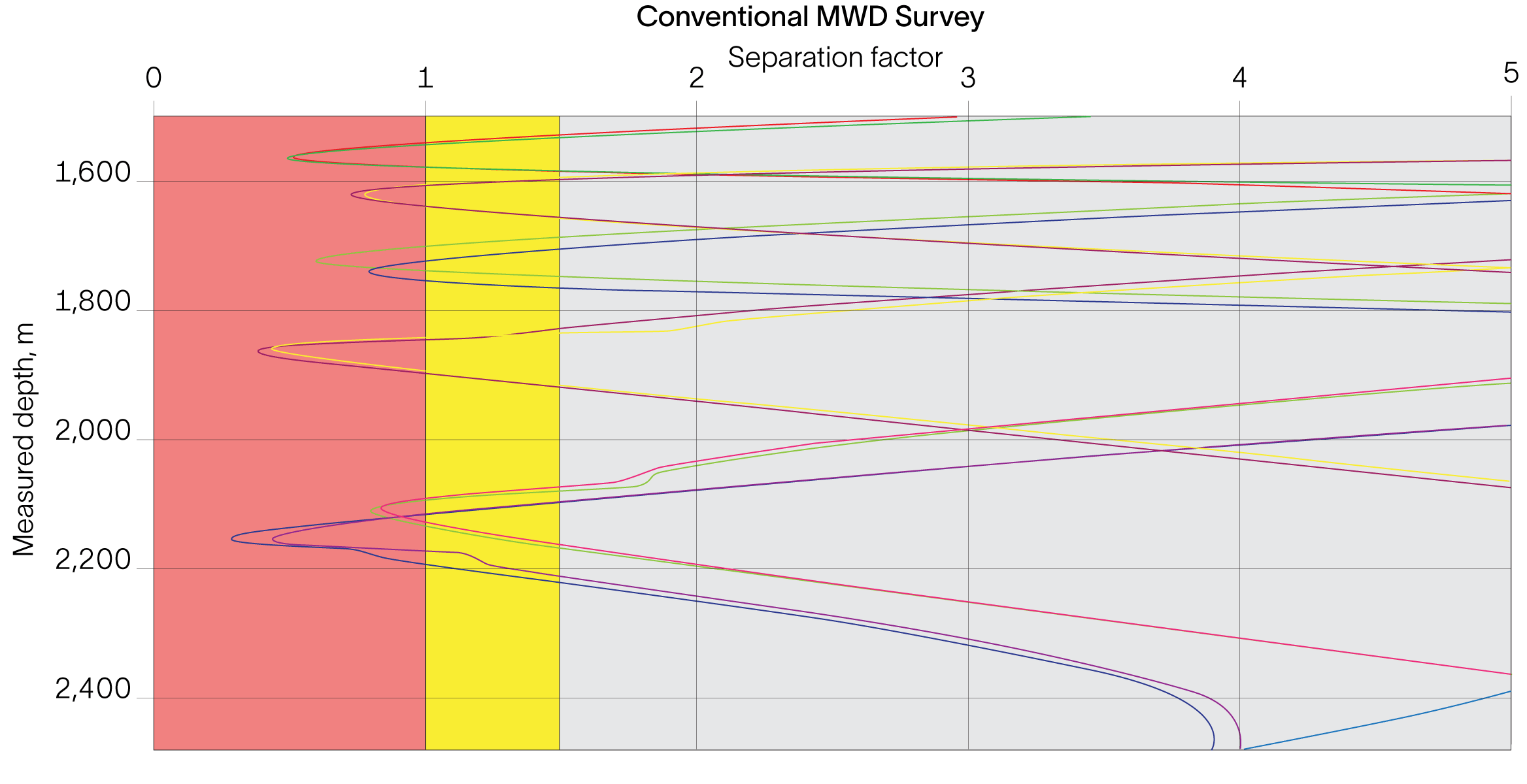The definitive choice for optimal borehole quality with surveying times 75% faster than conventional surveys.
Reduced collision risk saves estimated USD 4.5 million in NPT
In a complex field offshore China, the customer eliminated complexity from 9 of the 12 wells with high risk for collision. Therefore, the customer could continue to produce from those wells during drilling, saving an estimated USD 500,000 in deferred production per well for a total savings of USD 4.5 million.
The customer's campaign to drill infill wells would decrease the average space between the wells in the field. Because the field is extremely complex with six platforms, each with dozens of producing wells, drilling new wells poses significant HSE risk. Any offset well with serious collision risk would need to be closed. Additionally, the congestion of wells requires extremely precise directional drilling and slow jetting operations. The customer needed high-accuracy measurements to reduce the complexity of drilling the field, increase drilling efficiency, decrease HSE risk, thus improving well economics.
GyroLink™ definitive gyro-while-drilling service was recommended because it reduces the ellipse of uncertainty around the wellbore. The precise surveys enable nine wells at high risk for collision to continue to produce while future wells are drilled. Because the estimated cost of shutting in one well is about USD 500,000, the customer saves USD 4.5 million by avoiding NPT and deferred production on those nine wells.
Combining GyroLink service with TruLink™ definitive dynamic survey-while-drilling service and WellDefined™ automated survey solutions enables the customer to conduct passive magnetic ranging for any offset well that still poses a collision risk. By executing ranging in real time (unlike conventional passive magnetic ranging), the customer saves a projected 1 hour to 3 hours of rig time per ranging shot for a single offset well. Considering the customer’s infill drilling campaign consists of more than 50 wells, the customer saves a significant amount of rig time and its associated costs while reducing well construction complexity and risk.
Precise and continuous range and direction data of offset wells enable the directional driller a safer and faster route to steer around each collision risk. Future tophole sections are expected to be drilled 50% faster than the benchmark without the risk of collisions that would otherwise significantly slow operations because of HSE risk. Therefore, GyroLink service’s tighter ellipse of uncertainty increases the amount of space available for the customer’s infill wells.
The customer significantly reduces HSE risk for the drilling campaign with fast, high-fidelity surveys, which decrease the complexity of drilling the field and enable faster, safer directional drilling with a tighter ellipse of uncertainty. Thus, the customer saves time and costs with collision-risk avoidance surveys.


